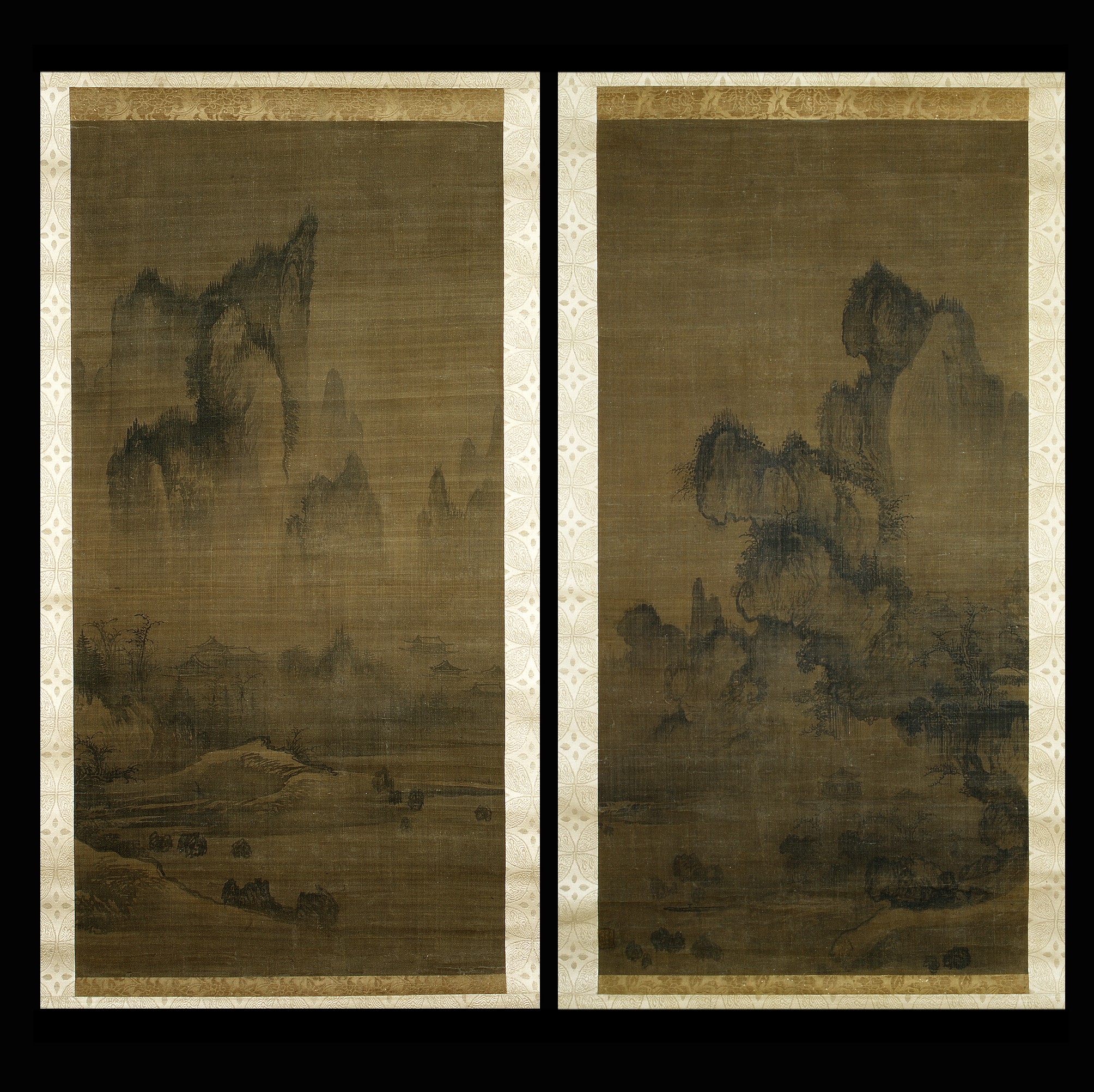Evening bell from mist-shrouded temple (left); Autumn moon over Lake Dongting (right)
Style of An Gyeon Korean
Not on view
해질녘 산사의 종소리 조선
煙寺暮鍾圖 朝鮮
Evening Bell from Mist-Shrouded Temple (left); Autumn Moon over Lake Dongting (right)
Joseon dynasty (1392–1910), late 15th–early 16th century
Hanging scroll; ink on silk
Purchase, Joseph Pulitzer Bequest, and Mr. and Mrs. Frederick P. Rose and John B.
Elliott Gifts, 1987 (1987.278a)
This pair of scrolls was most likely part of a set of eight depicting the famed scenery around china's Xiao and Xiang Rivers. Landscape paintings illustrating sites in China known from classical literature—places that often had nostalgic associations—flourished in the early Joseon period even as their number and reputation dwindled in contemporary Ming dynasty (1368–1644) China.
Although these scrolls are unsigned, the artist clearly aligned himself with the recognizable style of the fifteenth-centure master An Gyeon. the left scroll represents a mountain valley with a large Buddhist temple complex veiled in mist. The same mood of melancholy and contemplation infuses the cloud-covered mountain and cold, glistening light in the right painting. Despite the title, the moon is absent from the scene, which is notable but not without precedent.
#7708. Evening Bell from Mist-Shrouded Temple (left); Autumn Moon over Lake Dongting (right)
Due to rights restrictions, this image cannot be enlarged, viewed at full screen, or downloaded.
This artwork is meant to be viewed from right to left. Scroll left to view more.




